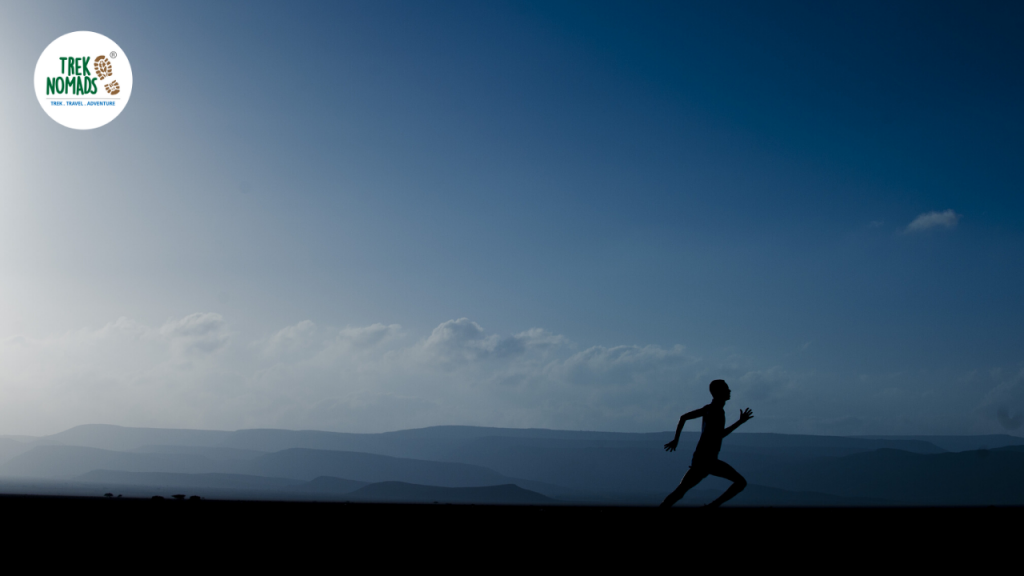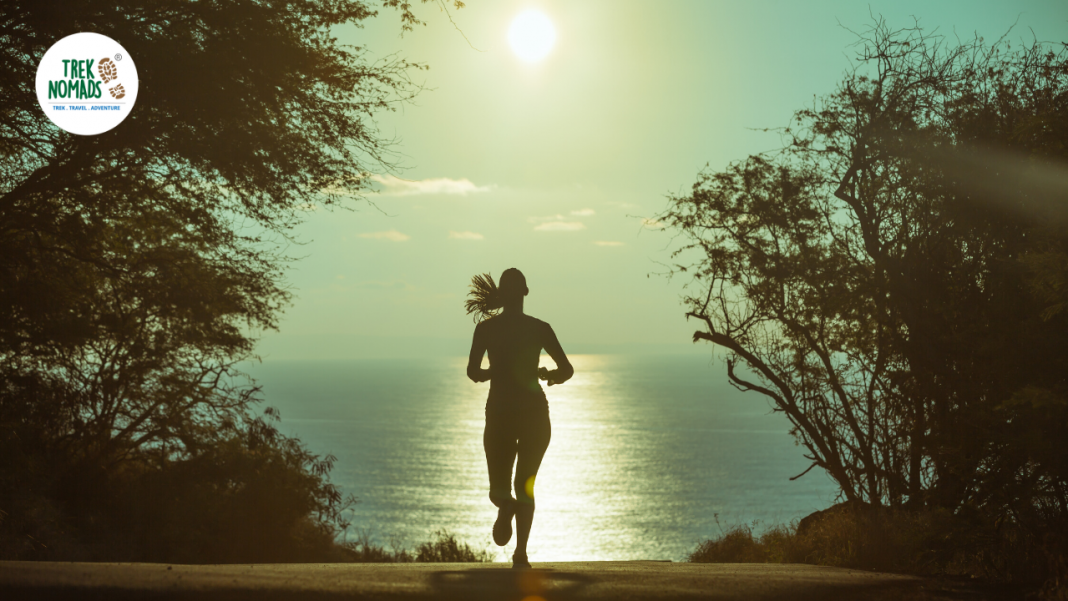Trekking is a challenging and strenuous activity. Whether it’s a one-day hike, two-day trek or a multi-day Himalayan trek, a good fitness level is a must to complete the trek with ease. Especially when it comes to multi-day treks like Everest Base Camp trek via Gokyo Ri & Chola Pass or Mt. Kilimanjaro Summit, all these treks have one thing in common – it requires high endurance and strength. The best way to work on and build endurance and strength is by introducing running to your fitness regime.
Why should running be a part of your Trek preparation regime?

Running works more on or less the same muscles as hiking and is used by hikers, backpackers and mountaineers all around the world to develop their cardiovascular or cardiorespiratory capacity (the 2 main forms of elements for getting fit for a hike).
For us, at TrekNomads, running is not just a crucial form of activity, it is also one of the ways we decide if someone is physically capable of completing a trek. There’s absolutely no use of heading out on a trek if you’re body is exhausted and won’t let you enjoy the beautiful views around you. This is why, when it comes to high-altitude trekking, you need to be at your fittest. This kind of fitness is only achieved when you start training well in advance (at least 3-4 months in advance).
Whether it’s running on the treadmill or hitting the roads, running is a great way for you to build your overall cardiovascular fitness.
Please note that we recommend you consult your doctor/physician before beginning a fitness regime. The content and recommendations of this blog is based purely on our experiences and feedback of our trekkers.
3 Reasons Why Running is the best form of Cardiovascular workout to prepare for a trek:

1. Running helps you build your cardiovascular capacity
Running is the only form of exercise that can help give you an overall physical exercise. The human body can quickly adapt when you regularly indulge in aerobic exercises (which requires more oxygen like running). It upgrades the functioning of its entire cardiorespiratory system to better handle that exercise. You’re lungs, heart, and vascular system will all become more effective and efficient at delivering oxygen throughout your body, especially to working muscles which becomes extremely important while trekking. With the higher altitude you reach, the oxygen level in the air reduces and it becomes important for your body to adjust to these levels with ease. That’s where running will help.
2. Running is cost-effective and does not require a gym
If you don’t want to spend a lot of money on gym memberships, running may just help you prepare for your trek better. All you need is a good path and a great pair of running shoes and you’re set. With apps like Nike Running Club, you can take each run at your pace and slowly introduce this as a part of your fitness regime without putting a hole in your wallet. Another added benefit here is that running lets you workout regardless of the weather which is good to help you condition yourself for a trek.
3. It helps strengthen your legs and core
This is a great respite from the monotony of the gym workouts—it’s also a chance for your body to use some of those little stabilizing muscles in your ankles, legs and glutes which are the crucial muscles you will be working on while trekking. This is a great way to change things up for your body and build strength that will translate well in your treks. And since with each step you are effectively balancing all your weight on one foot for a moment, your core is kicking in to keep you upright. Moving at a slower pace will allow your body to engage muscles that it often doesn’t, at higher speeds. Which will in turn help you build a strong core – one of the most aspects that helps you balance yourself both during ascent and descent.
If you are using running to train for Trekking, you just need to ensure two things:
1. You slowly start running
If you’re new to running, you need to make sure that you graduate to running slowly and steadily. We recommend you start with a mix of walking and slow jogging with a 60:40 ratio depending on your body capacity. You can start with a 3 min walk followed by a 2 min run. Once you’re habituated to this, you can slowly increase the jogging ratio, and once you are comfortable jogging 1 Km continuously without taking breaks you can add interval training to your regime. Don’t forget to keep a watch on your form and breathing as these aspects are most ignored while running.
2. You stick to aerobic training.
If you are running too quickly (and getting tired too early) you will not be training the right ‘zone’. A good judge of this is if you can breathe through your nose, you are training at the right intensity. If you can’t, you might want to slow down a bit.
3. You stay injury-free
If you are not a lifelong runner, running can be tough on the body. Make sure you stretch before and after your run to ensure you don’t cause any kind of injuries to your body. And many people trying to start running again pull up with aches, pains, and injuries. If this is you, running probably isn’t going to be the best way to train. You should instead stick to things like walking with a loaded backpack or cycling.
How to judge if you are ready for a high-altitude trek?

At TrekNomads, we have a physical fitness test before our high-altitude treks to ensure that our Nomads are fit enough to complete the trek. There’s no fun if you can’t go to the summit because your body doesn’t let you, is there?
This is why we want you to enjoy every aspect of the trek and that can only happen when you are physically fit. After putting in a lot of thought, we decided on a simple physical test to judge if you’re ready for a high-altitude trek. All you need to do is complete a 5 Km run within 35 minutes. That’s all there is. No half-marathons, or full-marathons or even 10k runs required. If you can complete a 5 Km run in under 35 minutes for moderate Himalayan treks like Valley of Flowers, Kedarkantha Summit, Dronagiri base camp trek. And 10K within 65 minutes for tougher Himalayan treks such as Everest Base Camp, Pangarchulla Summit trek and Annapurna Circuit Trek with ease, it means you’re ready to book your next high-altitude trek!
How can you help the trekking community during the COVID-19 pandemic?
The trekking community has taken one of the biggest hits in history due to the COVID-19 pandemic. Here are 5 ways to help the trekking community sustain during this crucial time. To get through this crucial time and to help our on-ground staff, we have introduced #NomadsAgainstCorona campaign which will help revive the trekking community in these trying times. 

[…] How Running Can Help You Trek Better […]